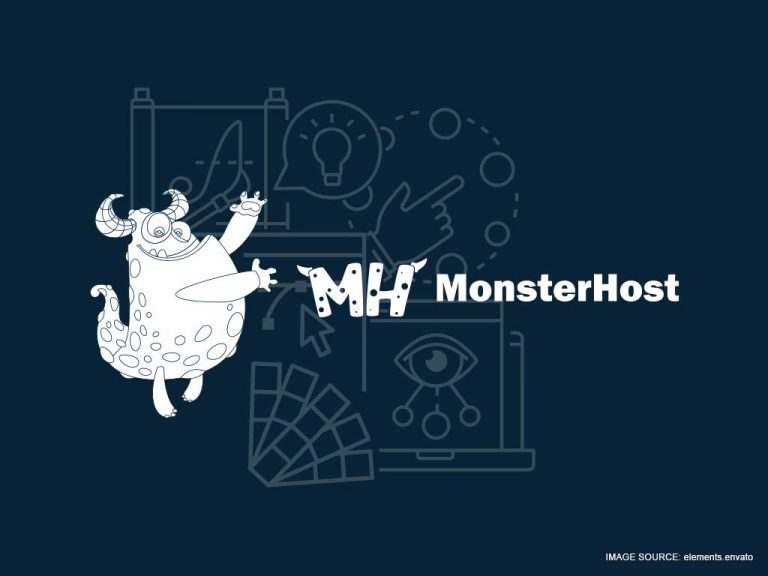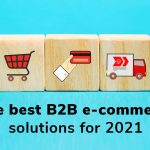Building and setting up your e-commerce store is easy as a click of a button these days. So simple that the steps involve deciding on your product line, registering your site’s domain, and choosing an e-commerce platform to host your site on. Yes, today opening an e-commerce store is faster than ever but in order to have a fighting chance in the industry, there are some keys you need to have at your disposal in order to be successful.
This article is going to breakdown the necessary keys needed to unlock the door to your e-commerce success.
Let’s dive in.
Table of Contents
5 Steps to Opening your E-Commerce Store
Step 1: Choose and Register Your Domain Name
The identity of your brand is tied to your domain name and so it is important to invest quality time in choosing the best domain name that represents your brand and e-commerce store. You want a name that is catchy and short. It needs to be memorable while also telling your prospective customers what your brand is all about. Once you’ve chosen your domain name it is time to register it.
Step 2: Choose a Web Host
Once your domain is registered you need a website hosting provider for your e-commerce store. You want to choose a web host that has a robust list of tools, benefits, space and bandwidth your e-commerce store needs to grow and flourish. To get more out of your hosting options choose a provider that includes a domain, hosting, and web building capabilities with security features to boot.
Step 3: Design your Website
Now it is time to design your e-commerce front store. You want to use a design that speaks to your brand but is also responsive and user-friendly. Your online store is the first impression your prospective customers will have of your brand and your products. Consider how you want your brand to be reflected through your website’s design.
When designing your website or editing one of our templates. Be sure to keep the design clean with little to no flashy distractions. Make your design user-friendly so that users are able to navigate with ease. Keep the readability of your site high. Use no more than 3 colors in your color palette, use online fonts that are easy to read.
Be consistent with your page elements through your site. Ensure that products are easy to find and descriptions are clear and the pictures are crisp.
Step 4: Use Internet Security Solutions
This is an important step in order to protect the privacy and sensitive information of your users, your brand’s reputation and your wallet. It is important to have an excellent internet security solution with website monitoring included. This helps to safeguard against cyber criminals trying to hack your site and destroy your reputation.
SSL Certificates are necessary to ensure that transaction on your site remains secure for your users. These certificates ensure that information like credit card details, online transactions, web forms, customer login information and much more is encrypted and kept out of the prying cyber hands of hackers.
Step 5: Promote your E-Commerce Store
Now that you’ve done the grunt work and your site is up and running, it is time to let the world know that you are open for business. Planning your E-Marketing Strategy is crucial to your e-commerce site’s immediate and long-term success.
Tapping into the right e-marketing channels is the best way to drive organic traffic to your brand-new e-commerce store and ensure your revenue stays on a steady incline. There are a few ways you can do this but the tested and best options are:
- Email Marketing & Opt-in: Having an opt-in form on your site by offering certain discounts, promotional items and freebies is the best way to snag new visitors and grow your email list. E-mail marketing is a great tool to build a loyal client base while sending out free content and giving discounts, promotions, and news about new products to keep them coming back for more.
- Social Media Marketing: Advertising on Social Media Platforms like Facebook, Instagram and Pinterest can drive new customers to your site daily. In fact, having a social media presence on 1 or all of these platforms is a great way to create a community following around your brand. Millions of users log in to social media daily and so targeted ads to your audience will funnel them to your site.
- Google Ads: Having an advertising budget for Google Ads is a must. Google has one of the largest networks on the internet and paying for ads to appear on all of their platforms ensures that your brand and e-commerce store will be seen by millions daily.
Let’s dive into the front-end store elements your e-commerce store needs to keep user experience high with equally high conversions.
Front-End Store Elements
The term “Front-end” refers to the elements on your website that your customers see. Just like traditional brick and mortar stores have a storefront your online store has a front-end. When new customers come to your site first impressions are lasting. This is the time to have an aesthetically pleasing yet responsive website that is easy to navigate, very responsive, optimized for mobile users and loads in less than 2 seconds.
Here are some of the elements you must include in your Front-end to ensure quality user-experience.
Contact Info:
You want to have your Contact page in the main menu on each page and listed in the footer of each page of your website. It is advised to have multiple channels by which customers can contact you as this creates trust and shows you’re available.
Live Chat Bot:
To take your communication channel the extra mile includes a live chatbot to answer your user’s quickfire questions.
FAQ Page:
Another key page to have in every main menu on your page with a link in the footer on each page. Curate a list of Frequently Asked Questions and answer them in this section.
Email Opt-in Form:
We mentioned this earlier as part of your marketing plan. This is the greatest way to build a database of trusted return customers. The key is to offer something free or give a discount in order to get users to opt-in and supply you with their email.
For example, you can offer a 10% -15% discount on a first purchase or give a coupon with a discount code to be used later.
As your email list grows you can market other products and promotions to your valued customers.
Abandoned Cart Emails:
Many customers will visit your site, load up their shopping cart with items and then leave for one reason or another. Sometimes it is to compare prices with similar sites before purchasing and sometimes they are simply distracted by life.
Therefore, it is important to use email marketing to remind your customers of all the goodies they left in the shopping cart on your site. This reminder can drive them back to bring the sale home.
High-Quality Product Photos and Descriptions:
The pictures on your site of your products should be shot professional and enhanced for optimum quality. Online shoppers shop with their eyes by being enticed by the look of a product and then by reading the description.
Keep the description simple, yet ensure it highlights the best features of the products. Be clear, concise and ensure that your description shows the benefit the product will have for the customer.
Have a Blog:
Content Marketing is one of the greatest ways to bring traffic to your site. You can use your blog to offer product reviews, create How-to articles on your products, offer solutions to your customer’s problems and the creative opportunities are endless. Month to month it is best to plan out your content marketing and tie it in with a freebie for Email opt-in.
Back-end Store Elements
As your store grows in clientele, popularity and traffic volume it will become harder to manage the influx. That’s where the back-end store elements come in to rescue you from being swamped. Back-end store elements are the tools you use in order to keep your e-commerce site running smoothly as you adjust to growth. Some of the tools recommended for the back-end are:
- Accounting Software Integration: Use accounting software that can be easily integrated with your e-commerce platform to help you manage your books, track revenue data and help you sort out taxes.
- Sales Tax Management: Depending on your country or city various sales taxes will apply to purchases customers make on your site. Therefore, be certain to use a sales tax management solution either from a third-party site or your e-commerce platform if it is built in to help you accurately calculate the necessary taxes.
- Inventory & Shipping: You want to keep your inventory updated at all times. You can use software to do this or the integration that is included in your e-commerce platform. Create automation for your popular products to let customers know they are back in stock. Use a reputable shipping solution that helps you print labels and notify your customers of shipping & tracking information. A great platform to use is Ship Station.
Combining all the Elements
Starting, running and promoting your e-commerce store is simple but requires a lot of work, planning and effort. In the end, it can be rewarding and exhilarating.
To ensure your store’s continued success keep things tight on the front and back ends. Constantly check that your site is secured, backed-up, and optimized for your users and there will be no limit to your success.






